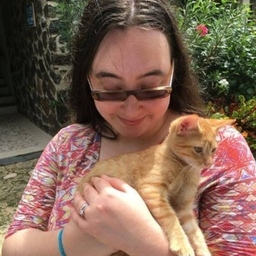
Maggie Astor
Health Reporter, Well at The New York Times
Politics reporter @nytimes. Not posting on Twitter anymore; find me on Bluesky (https://t.co/PIxJA2fRa7) or Threads (astor.maggie).
Articles
-
1 week ago |
seattletimes.com | Maggie Astor
The Trump administration has instructed the national suicide prevention hotline to stop offering specialized support to LGBTQ+ callers next month, saying those callers can rely on the hotline’s general services. The Trevor Project, a nonprofit that has provided that specialized support to LGBTQ+ callers to the 988 suicide prevention hotline, said Wednesday that it had received a stop-work order for that service, effective July 17, and provided a copy of the order to The New York Times.
-
1 week ago |
nytimes.com | Maggie Astor
You have a preview view of this article while we are checking your access. When we have confirmed access, the full article content will load. The federal government says it will maintain funding for a national suicide prevention hotline, but no longer pay for specialized support for L.G.B.T.Q. people.
-
1 week ago |
infobae.com | Maggie Astor
Ticks (Insects)Lyme DiseaseGlobal WarmingAgriculture and FarmingEnvironmentMountainsA medida que suben las temperaturas, proliferan garrapatas de todo tipo que amenazan la salud de las personas. Últimamente, Shannon LaDeau y sus colegas han tenido visitantes inoportunos en su oficina del valle del Hudson, en Nueva York: garrapatas, que trepan por el edificio e intentan atravesar las puertas.
-
1 week ago |
nytimes.com | Maggie Astor
Últimamente, Shannon LaDeau y sus colegas han tenido visitantes inoportunos en su oficina del valle del Hudson, en Nueva York: garrapatas, que trepan por el edificio e intentan atravesar las puertas. “Lo cual es un poco alarmante”, dijo LaDeau, ecóloga de enfermedades del Instituto Cary de Estudios de Ecosistemas, quien estudia los arácnidos y los patógenos que estos portan. A medida que los inviernos se hacen más cálidos, las garrapatas de varios tipos prosperan.
-
1 week ago |
nytimes.com | Maggie Astor
Lately, Shannon LaDeau and her colleagues have had unwelcome visitors at their office in New York’s Hudson Valley: ticks, crawling up the building and trying to get through doors. “Which is kind of alarming,” said Dr. LaDeau, a disease ecologist at the Cary Institute of Ecosystem Studies who studies the arachnids and the pathogens they carry. As winters get warmer, ticks of several kinds are flourishing. Deer ticks, known for transmitting Lyme disease, are moving farther north.
Try JournoFinder For Free
Search and contact over 1M+ journalist profiles, browse 100M+ articles, and unlock powerful PR tools.
Start Your 7-Day Free Trial →Coverage map
X (formerly Twitter)
- Followers
- 20K
- Tweets
- 22
- DMs Open
- No